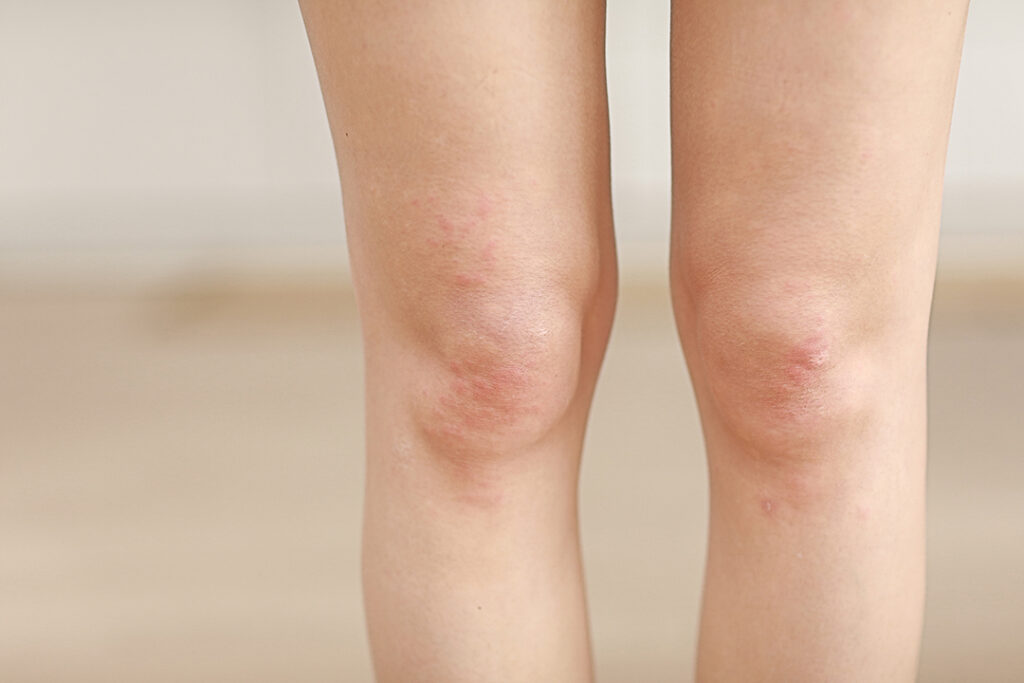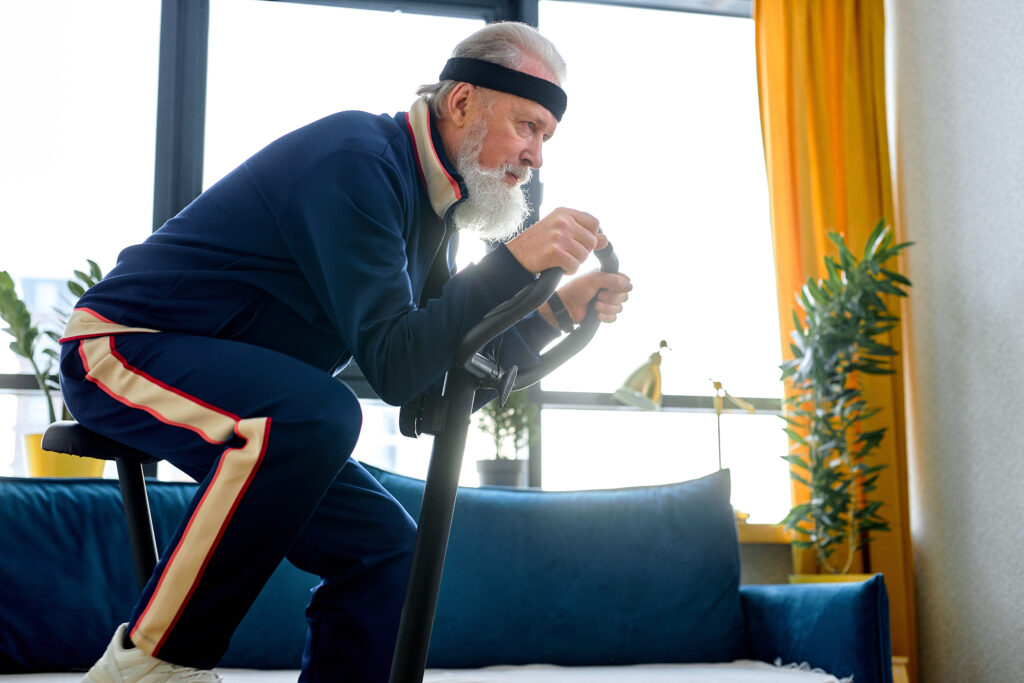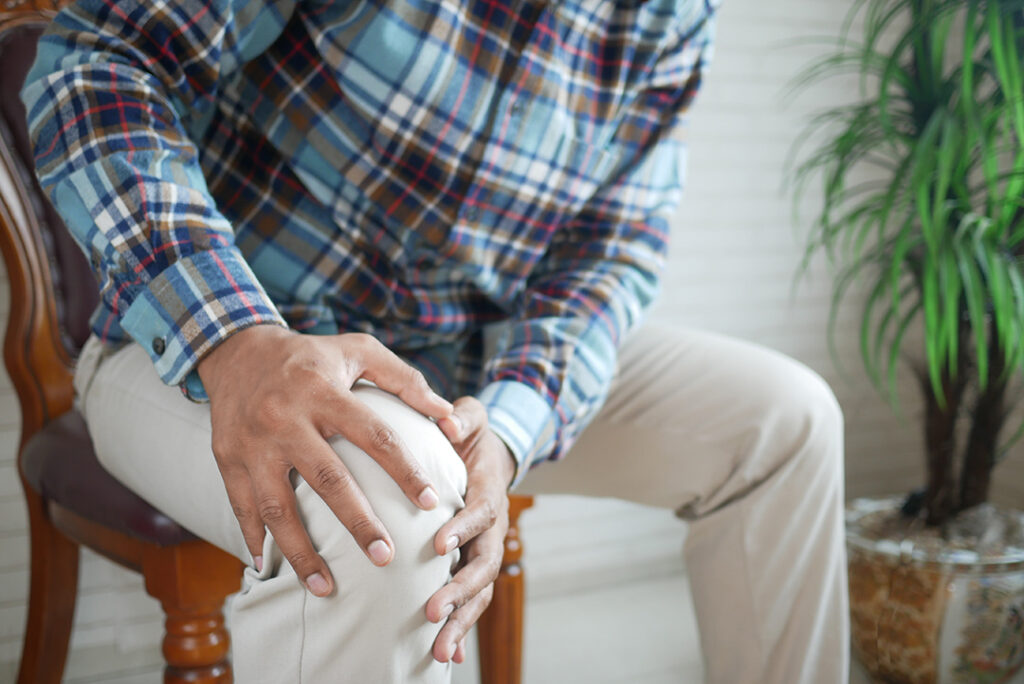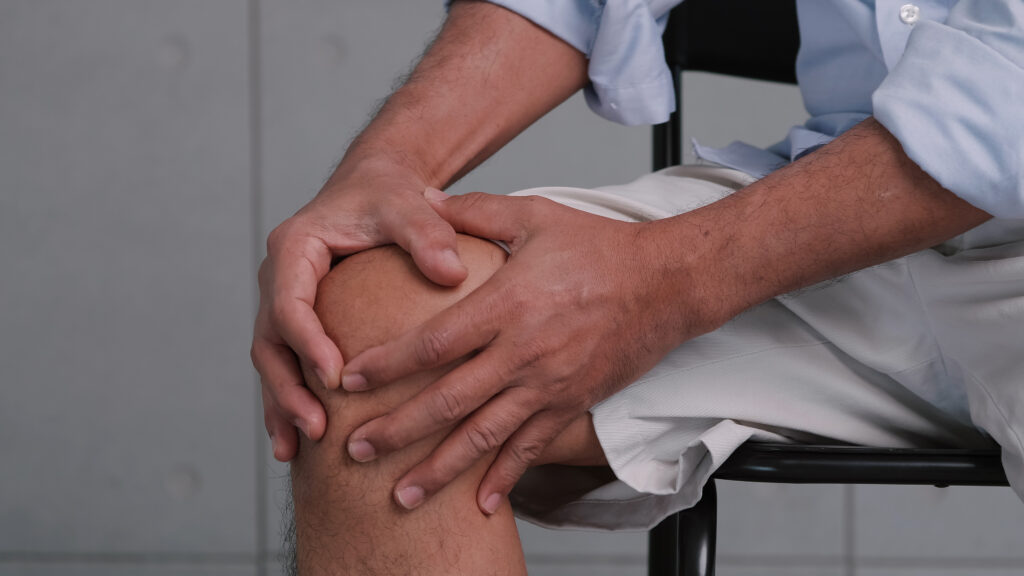What Is Knee Bursitis?
Knee bursitis is a condition that causes inflammation of the bursae, small fluid-filled sacs that cushion the bones, tendons, and muscles around the knee joint. When these sacs become irritated or inflamed, it can lead to pain, swelling, and limited movement in the knee. Bursitis in the knee is often caused by repetitive motions, prolonged pressure on the knees, or direct injury. At Dr. Burke Orthopedics, we offer comprehensive care for knee bursitis, providing both conservative and surgical treatments to relieve pain and restore normal knee function.
Knee bursitis occurs when one or more bursae in the knee become inflamed. The bursae act as cushions, reducing friction and allowing smooth movement between the bones, muscles, and tendons in the knee. In the knee, the most commonly affected bursae include:
- Prepatellar Bursa: Located in front of the kneecap (patella), this bursa is often affected in people who spend a lot of time kneeling.
- Infrapatellar Bursa: Situated below the kneecap, this bursa can become inflamed due to repetitive kneeling or overuse.
- Pes Anserine Bursa: Located on the inner side of the knee, this bursa can become irritated by overuse or activities that place stress on the inner knee.
Knee bursitis can develop gradually or suddenly, depending on the cause, and the condition can be either acute (short-term) or chronic (long-term).
Causes of Knee Bursitis
Knee bursitis is typically caused by repetitive motions or pressure on the knee, but it can also result from direct injury, infection, or underlying health conditions. Common causes include:
- Repetitive Kneeling: People who spend a lot of time on their knees, such as carpet installers, plumbers, or gardeners, are at a higher risk of developing knee bursitis, particularly in the prepatellar bursa.
- Overuse: Activities that place repetitive stress on the knee, such as running, jumping, or cycling, can lead to inflammation of the bursae, particularly in athletes.
- Direct Trauma: A blow or fall onto the knee can irritate the bursae, leading to swelling and inflammation. This is common in sports injuries or accidents.
- Infection: Septic bursitis occurs when a bursa becomes infected, leading to swelling, pain, and warmth in the affected area. Infected bursitis requires prompt medical treatment, often including antibiotics.
- Underlying Conditions: Certain conditions, such as rheumatoid arthritis or gout, can increase the likelihood of developing bursitis due to the presence of chronic inflammation in the joints.
Symptoms of Knee Bursitis
The symptoms of knee bursitis vary depending on which bursa is affected and whether the condition is acute or chronic. Common signs and symptoms include:
- Swelling: Swelling around the knee is one of the most common symptoms of knee bursitis. The affected area may appear swollen and feel warm to the touch.
- Pain: Pain is typically localized to the front, side, or back of the knee, depending on the affected bursa. The pain may worsen with movement, pressure, or prolonged activity.
- Stiffness: The knee may feel stiff or difficult to move, particularly after periods of rest or inactivity. Bending or straightening the knee can be painful.
- Tenderness: The area around the affected bursa may be tender or painful when touched.
- Limited Range of Motion: As swelling and inflammation increase, the knee may become more difficult to move, limiting the range of motion.
- Redness and Warmth: In cases of septic bursitis, the skin around the knee may become red and feel warm, and the patient may experience fever or chills.
Diagnosis of Knee Bursitis
At Dr. Burke Orthopedics, diagnosing knee bursitis involves a comprehensive physical examination and imaging tests to determine the extent of the inflammation and rule out other potential causes of knee pain.
1. Physical Examination: The doctor will assess the affected knee, checking for signs of swelling, tenderness, and warmth. They may also ask about your medical history and recent activities to identify potential causes of bursitis.
2. Imaging Tests:
- X-rays: X-rays are typically used to rule out other causes of knee pain, such as fractures, arthritis, or bone spurs. While X-rays do not show inflammation, they provide valuable information about the overall structure of the knee joint.
- Ultrasound or MRI: In some cases, an ultrasound or MRI may be recommended to get a more detailed view of the bursae and surrounding soft tissues. These tests help confirm the presence of inflammation and identify any fluid buildup.
3. Aspiration (for Septic Bursitis): If septic bursitis is suspected, the doctor may use a needle to withdraw fluid from the bursa for testing. This fluid can be analyzed to check for infection, which may require antibiotics.
Treatment for Knee Bursitis
Treatment for knee bursitis at Dr. Burke Orthopedics focuses on reducing pain and inflammation, preventing further irritation, and restoring normal knee function. Depending on the severity of the condition, both non-surgical and surgical treatment options may be recommended.
1. Non-Surgical Treatments
- Rest and Activity Modification: Avoiding activities that aggravate the condition, such as kneeling, running, or squatting, is essential for allowing the bursa to heal. Resting the knee and modifying daily activities can help reduce inflammation.
- Ice and Compression: Applying ice to the affected area and using compression can help reduce swelling and relieve pain. Ice should be applied for 15-20 minutes at a time, several times a day.
- Medications: Nonsteroidal anti-inflammatory drugs (NSAIDs), such as ibuprofen or naproxen, can help manage pain and reduce inflammation. In cases of septic bursitis, antibiotics may be required to treat the infection.
- Corticosteroid Injections: For more severe cases, corticosteroid injections may be used to reduce inflammation and provide long-lasting relief. These injections are administered directly into the affected bursa.
- Physical Therapy: Once the inflammation has subsided, physical therapy can help strengthen the muscles around the knee, improve flexibility, and prevent recurrence. Stretching and strengthening exercises focus on improving knee stability and reducing stress on the joint.
2. Surgical Treatments:
Surgery is rarely needed for knee bursitis, but it may be considered if the condition becomes chronic or does not respond to non-surgical treatments. Surgical options include:
- Bursa Drainage: If there is significant fluid buildup in the bursa, the doctor may drain the fluid using a needle. This procedure, known as aspiration, helps reduce swelling and relieve pressure on the knee.
- Bursectomy: In cases of chronic or recurrent bursitis, the inflamed bursa may be surgically removed. The body will naturally form a new bursa in its place as part of the healing process.
Recovery and Rehabilitation
The recovery time for knee bursitis depends on the severity of the inflammation and whether surgery was required. Most patients experience relief within a few weeks with proper rest and conservative treatment.
- Non-Surgical Recovery: For patients who undergo non-surgical treatments, including rest, ice, and physical therapy, the pain and swelling typically improve within 2-6 weeks. Once the inflammation subsides, physical therapy helps restore strength and flexibility in the knee, preventing future flare-ups.
- Post-Surgical Recovery: For patients who require surgery, recovery times vary depending on the procedure. After surgery, the knee may need to be immobilized for a short period to allow healing, followed by a structured physical therapy program to regain strength and mobility.
At Dr. Burke Orthopedics, we provide personalized rehabilitation programs to help patients recover fully and return to their normal activities. Our goal is to ensure a complete recovery and prevent the recurrence of knee bursitis.
Why Choose Dr. Burke Orthopedics for Knee Bursitis?
At Dr. Burke Orthopedics, we offer expert care for patients with knee bursitis, providing personalized treatment plans tailored to each patient’s specific needs. Our team of orthopedic specialists is dedicated to relieving pain, reducing inflammation, and restoring normal knee function. Whether you need conservative management or surgical intervention, Dr. Burke Orthopedics is here to provide the highest level of care and support throughout your recovery.





